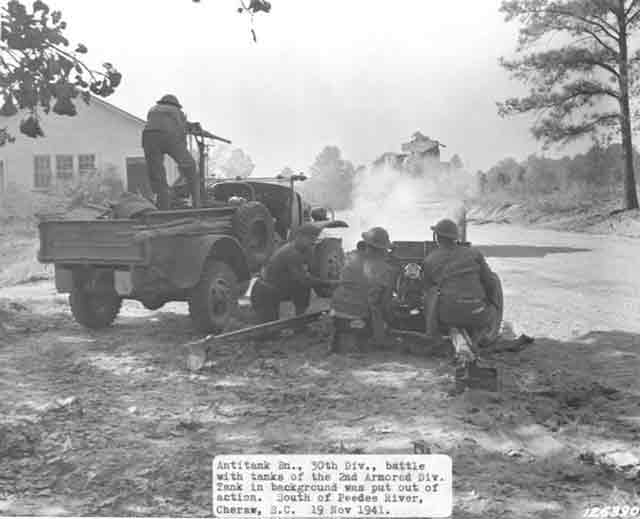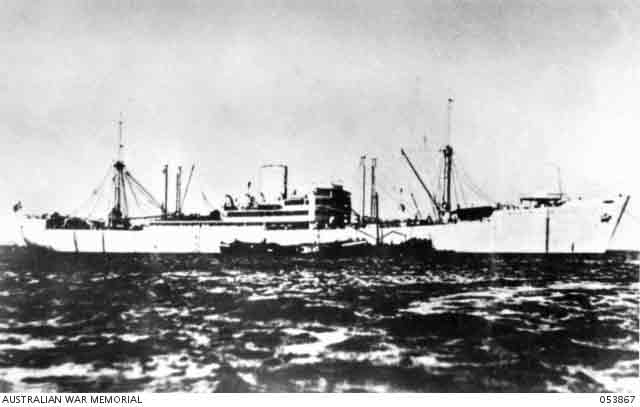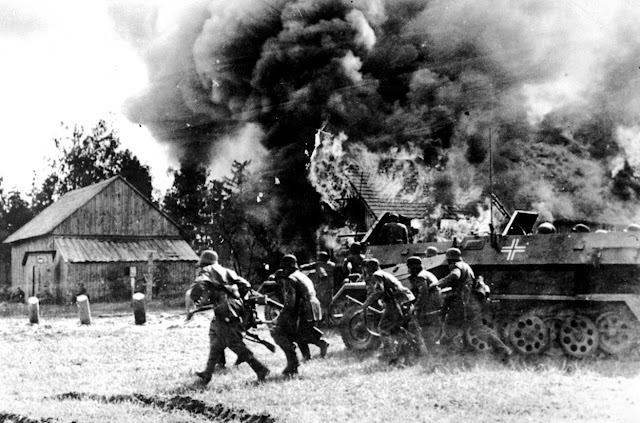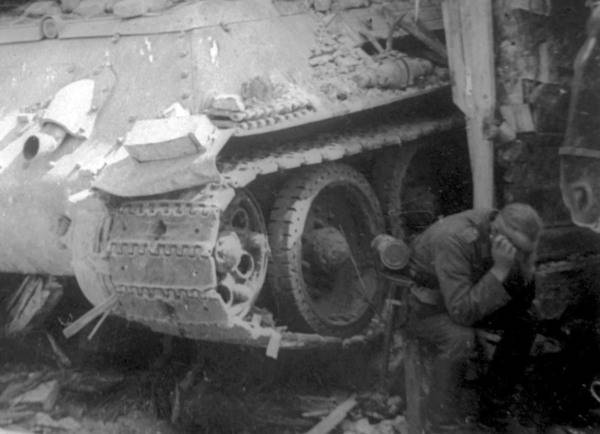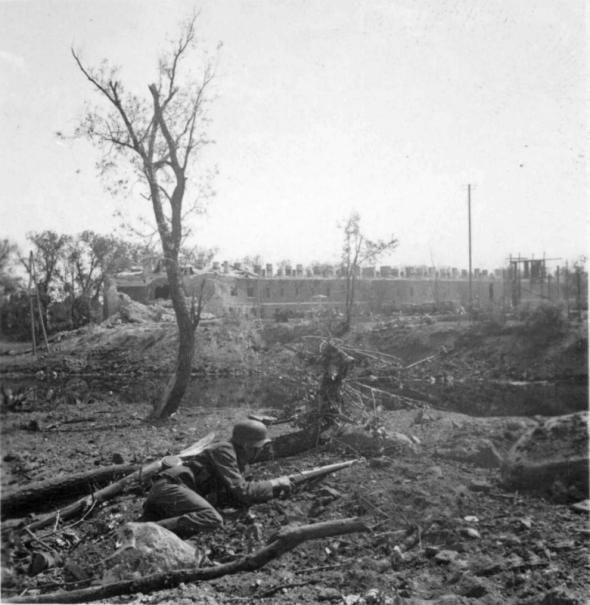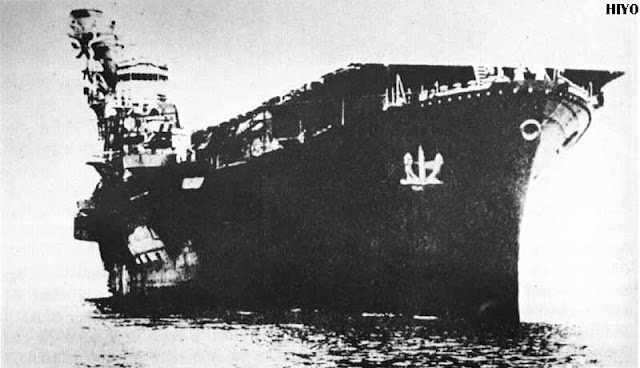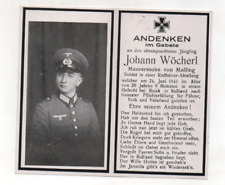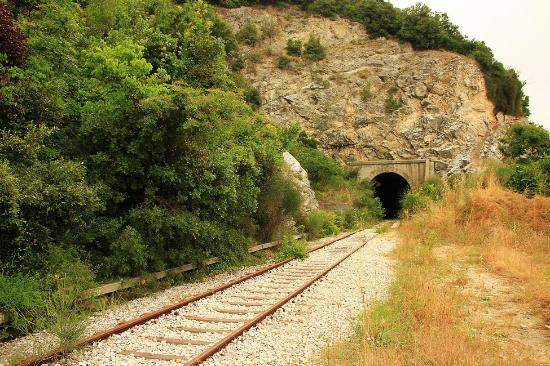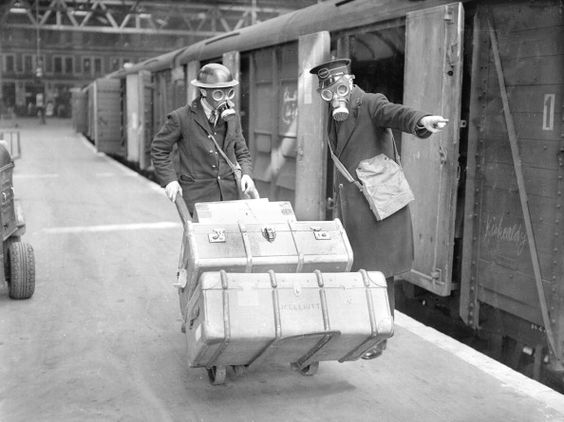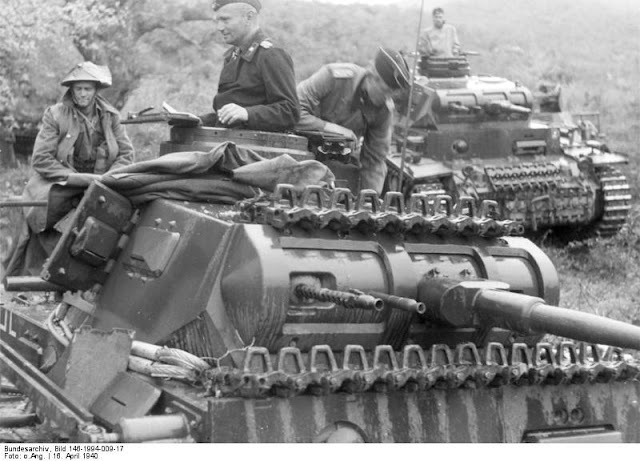Eastern Front: Operation Barbarossa continues barrelling ahead on
26 June 1941. In the Army Group North sector, spearhead panzers reach Daugavpils and the Dvina River.
While Finland has declared war (the "Continuation War" of the "Winter War"), it is still preparing for its offensives towards Leningrad, the Svir River, and the Murmansk railway. The Germans in the far north of Finland - the German Army of Norway - also are preparing for operations toward Murmansk, but nothing major has begun yet.
However, the Soviet naval base at Hango in southern Finland is close at hand and a fairly easy target - if the Finns decide to mount a major effort. Hango, granted to the USSR under the armistice terms of the Winter War, is isolated both by land and by German control of the Baltic. However, the Soviet troops there are well-supplied and at this time they are determined to hold out.
In the Army Group North sector, the 1st Panzer Division and 36th Motorised Infantry Division of the XLI Panzer Corps and following infantry divisions slice through the rear of the Soviet mechanized corps and close an encirclement around Soviet 3rd Mechanised Corps (out of fuel) and the 2nd Tank Division.
Advance elements of LVI Panzer Corps (Brandenburg Division troops wearing Soviet uniforms) of General von Manstein's 4th Panzer Group seize two bridges at Daugavpils over the Dvina River, enabling the panzers to establish a bridgehead. This concludes the Battle of Raseiniai, a decisive German victory.
The Soviets are in the disarray, and the bridgehead is a major problem. General Kuznetsov is under orders (from Semyon Timoshenko) to defend the Dvina and begins to organize a counterattack to eliminate it using the 21st Mechanized Corps. However, this will take time to organize due to the chaotic state of supplies and troops behind Soviet lines. Adolf Hitler, however, is worried that the panzers are outrunning the infantry, so he orders a temporary halt to the advance.
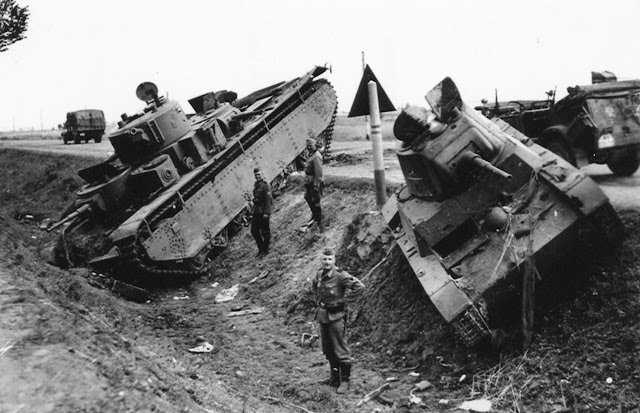 |
| Abandoned T-35 and T-26 Soviet tanks in June 1941. |
In the Army Group Center sector, the Soviet Western Front is in disarray after a failed counterattack toward Grodno on the 25th. The Soviets are withdrawing toward Slonim and Minsk. The German 2nd (Guderian) and 3rd (Hoth) Panzer Groups aim toward a meeting near Minsk that they hope will bag huge Soviet forces. These Soviet forces struggling to avoid encirclement include General Boldin, deputy commanding officer of Soviet Western Front.
Brest Fortress continues to hold out behind the German lines. It is an important fortress because it controls the crossings of the Bug River and the Warsaw-Moscow railway and highway. In the evening, the Germans managed to capture most of the northern Kobrin fortification except for an installation known as the East Fort. The Soviet defenders refuse to surrender, so the Germans decide to destroy it using the Luftwaffe.
In the Army Group South sector, the Battle of Brody continues. The Germans continue advancing, but the Soviets launch several flank attacks to try to stop them. While the Soviets have many powerful forces in the area, their counterattacks suffer from a lack of coordination.
The 10th Tank Division has a savage day near Radekhiv, destroying 23 panzers at a cost of 13 KV and 12 BT-7 tanks. The 19th Mechanized Corps (Major General N.V. Feklenko) attacks from the north toward Dubno but comes up short. While there are heavy losses on both sides, these flank attacks do little to slow down the advancing panzers.
The most tactically significant battle of the day occurs when 8th Mechanized Corps attacks toward Brody–Berestechko. The 8th takes a column of the 11th Panzer Division advancing in a column by surprise and savages it. The Germans are reduced to using motorcycle troops of the 48th Panzer Corps against Soviet tanks. Soviet General Popel prepares to take advantage of this by preparing to it the rear of the 11th Panzer Division with his 300 tanks, but he is still assembling his forces when the day ends.
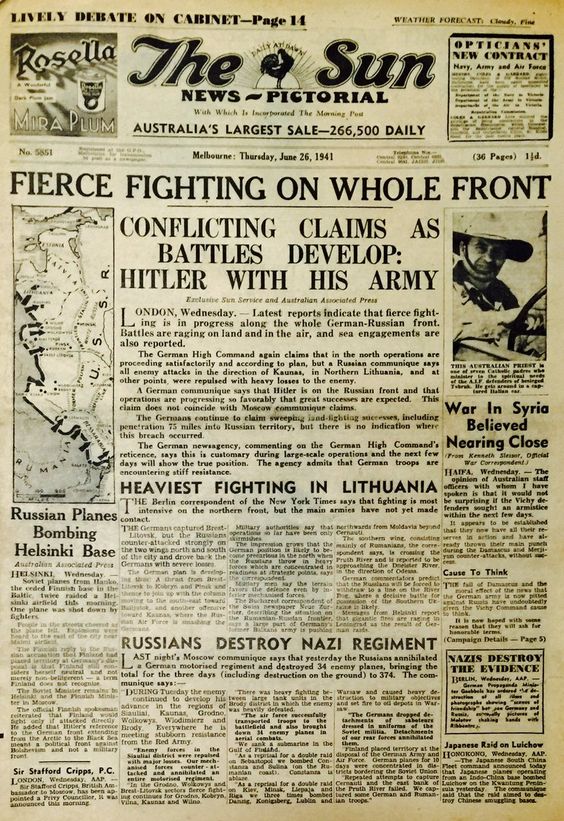 |
| "Fierce Fighting on the Whole Front." Melbourne, Australia The Sun, 26 June 1941. |
The Luftwaffe bombs Leningrad. This is one of the first raids, but Luftwaffe raids on Leningrad soon will become a daily occurrence. Hungarian Heinkel He 170s, flying as part of the I Long Range Reconnaissance Group, launch their first mission.
Near Daugavpils, Kommodore Werner Mölders downs two planes, a Soviet Pe-2, and an I-16. This raises his total number of victories to 77. Werner Mölders continues to be the leading air ace of the war at this time, with most of his victories against the RAF.
While flying a Fiesler Storch observation/transport plane, Hauptmann Lothar Keller of II./JG 3, a 20-victory Experten (ace), perishes. He is replaced as Gruppenkommandeur by Hauptmann Gordon Gollob.
The Red Air Force bombs Bucharest. Also, in a very controversial incident, two or three unidentified bombers bomb the Hungarian border town of Kassa (Kosice) and strafe a passenger train. The bombing of Kassa kills 20 and injures 41 (this previously was a part of Czechoslovakia), while 37 on the train also perish. In addition, there are hundreds of injured. The Hungarians assume that it is the Red Air Force, but it is just as likely that they are errant Luftwaffe bombers. Another theory is that it is a deliberate German false-flag operation, in which Luftwaffe pilots use captured Soviet planes to stage an "incident" that will provoke Hungary into declaring war on the USSR (which Hungary does on the 27th, using the Kassa bombing as a reason).
 |
| "Bren gun carriers manned by Indian troops outside Damascus, 26 June 1941. Note the wrecked Vichy French FT17 tank on the right, left by the retreating enemy." © IWM (E 3839). |
Syrian/Lebanon Campaign: With the British in possession of Damascus, the Vichy French troops are consolidating their defenses around Beirut. The most consequential action occurs in the air, where a strafing run on Homs airfield by Tomahawks of 3 Squadron RAAF destroys five new Dewoitine D.520s of Fighter Squadron II/3 (Groupe de Chasse II/3) and cause damage to six others.
Lieutenant-General Lavarack, commanding operations in Syria and Lebanon, orders Major-General Allen of the 7th Australian Division to focus on the advance along the coast. The Vichy French Army is far from beaten, and their artillery maintains a fierce barrage. For the time being, a lull develops in ground operations as the Australian commanders ponder their next move.
The Royal Navy bombards Vichy French positions at Abey.
European Air Operations: RAF Bomber Command raids Cologne (51 bombers), Dusseldorf (44), and Kiel (41). During the day, RAF Fighter Command sends a Circus mission to the power station at Comines. However, thick haze forces the mission to abort.
During the Circus mission, RAF pilot James "Johnnie" Johnson gets a victory, downing a Bf-109.
 |
| Colonel Philibert Collet's Circassian Cavalry outside the railway station at Damascus, 26 June 1941. |
Battle of the Baltic: The Soviets complete the withdrawal of their fleet from their bases at Liepāja, Ventspils, and Rīga. They have had to scuttle numerous ships (such as submarine M-83 scuttled at Liepaja today) that they are unable to move.
U-149 (Kptlt. Horst Höltring), a training boat of the 1st U-boat Flotilla based at Gdynia/Gotenhafen on its only patrol of the war, sinks 206-ton Soviet submarine M-99 (some sources say M-101 on 27 June) northwest of Dago Island.
Soviet submarine M-72 hits a mine and is damaged off Kronstadt. It makes it to port. The identities of all these ships - M-99, M-101, M-72 - is unclear from the sources.
Soviet warships lay mines in the Baltic and are attacked by German forces doing the same. A German S-boat torpedoes Soviet destroyer Storozhevoi in the Irben Strait. The destroyer makes it back to Leningrad. The S-boats, however, do sink Estonian freighter Lidaza.
Finnish vessels Vesihiisi and Iku-Turso lay mines off the Estonian coast.
 |
| U-576, a Type VIIC boat. |
Battle of the Atlantic: The Luftwaffe bombs and sinks 275-ton Royal Navy minesweeping trawler HMS Tranio in the Thames Estuary near No. 57 Buoy (Smith's Knoll). The ship is in tow at the time. There are no casualties.
Convoy OB-339 departs from Liverpool bound for Halifax, Convoy HX-135 departs from Halifax bound for Liverpool.
Royal Navy light cruiser HMS Euryalus is commissioned, corvette Sweetbriar and minesweeping trawler Eday are launched and minesweeper Horsham is laid down.
Canadian corvette HMCS Prescott (Lt. Henry A. Russell) is commissioned, while corvette Timmins is launched at Esquimalt BC and minesweepers Parrsborough and Rockhampton are launched.
Dutch destroyer HNLMS Evertsen (previously HMS Scourge) is laid down.
U-453 (Kapitänleutnant Gert Hetschko) and U-576 (Kapitänleutnant Hans-Dieter Heinicke) are commissioned, U-583 and U-584 are launched, and U-304 is laid down.
 |
| Rearming a Messerschmitt Bf.109E-7 of 7./JG 26. June 1941, North Africa. Note the "Schlageter" unit marking. |
Battle of the Mediterranean: The situation on land is fairly quiet. The RAF raids Gazala.
Royal Navy submarine HMS Severn torpedoes and sinks 1292-ton Italian freighter Polinnia southeast of Ischia (south of Naples).
Royal Navy submarine HMS Utmost torpedoes and sinks 4080-ton Italian freighter Enrico Costa four miles off Cape Todaro (northern Sicily).
Force H of the Royal Navy, based at Gibraltar, begins another mission to supply aircraft to Malta. This is Operation Railway, and the aircraft are on aircraft carrier HMS Ark Royal.
British troopship HMT Nieuw Amsterdam departs Suez bound for Durban. It carries the King of Greece and the royal family, other members of the Greek government, 1000 prisoners of war and their 75 guards, and 151 passengers.
Since the eastern Mediterranean has quieted down, battleships Queen Elizabeth, Valiant, Warspite and numerous supporting vessels depart Alexandria for gunnery practice.
At Malta, there is a continuous bombing by the Italians over a five-hour period. The raid starts around 22:00 and lasts until around 03:00 the next morning. The residents of Malta consider these "nuisance" raids because they seem less intended to cause damage than to keep people awake by simply circling around Valletta.
 |
| "Passing out parade of newly trained merchant seamen. The Captain of HMS GORDON gives a parting address to the passing out draft." © IWM (A 4467). |
Battle of the Indian Ocean: German raider Kormoran has a big day in the Bay of Bengal. First, it spots a darkened freighter that does not respond to a warning shot. Kormoran then opens fire and sinks 4153-ton Yugoslavian freighter Velebit. There are 17 survivors (two eventually succumb to their injuries), while 14 men perish. The Velebit actually doesn't sink right away, and 8 sailors who stay on it manage to keep the pumps working long enough for it to drift to a grounding on a nearby reef.
Kormoran then spots another ship. This one also ignores a warning shot, so Kormoran uses gunfire to sink 3472-ton Australian freighter Mareeba midway between Sri Lanka and the Andaman and Nicobar Islands. There are 26 deaths and the 25 survivors become prisoners of war (some sources say there the entire crew is saved, and it only numbers 48 people - ship records can be very sketchy at times). The Mareeba has enough time to get off a distress call, but nothing comes of it.
 |
| Australian freighter Mareeba, sunk on 26 June 1941 by German raider Kormoran. |
Battle of the Black Sea: Soviet cruiser Voroshilov and accompanying destroyers bombard Constanta, which is being attacked by both sea and air. The Soviets blow up a Romanian ammunition train. However, they are chased off by the Royal Romanian Navy's coastal fortifications (
Gruparea de artilerie de coasta Constanta, comprised of six batteries ranging in size from 150mm and 120mm down to 75mm) and Romanian destroyers Regina Maria and Marasti. German 28cm coastal battery "Tirpitz" aids in the defense.
Soviet destroyer Moskva is hit and sinks during the engagement, although which battery hit it and the effect of hitting a mine while withdrawing to Sevastopol has been debated ever since. Destroyer Kharkiv is damaged by a near miss when the Luftwaffe attacks, but makes it back to Sevastopol. Cruiser Voroshilov also hits a mine but also makes it back to port.
A fight takes place in the early morning hours on the Chilia branch of the Danube Delta, near the commune of Ceatalchioi which is known simply as the Action of 26 June 1941. Two Romanian pocket torpedo gunboats, V-1 and V-3 of the Romanian Danube Flotilla, take on three Soviet armored motor gunboats, which are there to lay mines. The Romanian commander of V-3 spots the Soviets and opens fire with his 47 mm gun. The middle of the three Soviet boats explodes, and the other two quickly retreat. One of the remaining Soviet boats hits a rock and is disabled, allowing the Romanians to capture it. This Soviet ship was repaired and commissioned in the Romanian Navy as V-7.
 |
| A Romanian CNLB-class riverboat of the type involved in the Action of 26 June 1941. |
War Crimes: The Soviet NKVD takes a large but unknown number of prisoners from jails in Minsk to the Tsagelnya Forest and executes them. This is a well-known site, and after the conclusion of World War II a memorial will be erected with events held there every year.
German/Soviet Relations: At some point during this week - details are very sketchy - Soviet Premier Joseph
Stalin attempts to broker a peace deal with Hitler through a Bulgarian diplomat, Ivan Stamenov. Foreign Minister Molotov has Lavrentiy Beria arrange this by using one of Beria's subordinates, NKVD officer Pavel Sudoplatov, who has a "casual" lunch at a Moscow restaurant with the diplomat. Sudoplatov explains to Stamenov what to say to Hitler. Stalin is willing to offer huge concessions for peace, including Ukraine and all of the areas granted to him in the "secret protocol" to the 23 August 1939 Molotov/Ribbentrop Pact in the Baltic States. Stalin does, though, demand to know why Hitler invaded the USSR.
Hitler turns Stalin down flat and will not even consider the offer. This is one of Hitler's biggest mistakes. These revelations were hidden for many years but came to light during the period after Stalin died from natural causes in the 1950s. There are few other details of this little-known incident, but there is no reason to doubt that it happened. This peace offer was classified as treason and was one of the charges used to condemn Beria to death. The others involved - including the Bulgarian Stamenov diplomat used as the go-between - submitted affidavits confirming the incident. Sudoplatov confessed to it under interrogation and also was convicted of treason, serving 15 full years in prison (yes, there are many questions about the validity of such "proof," but there was a lot of corroboration). Molotov was never tried for treason despite his deep role in the incident, but gradually fell out of favor, lost his positions one by one, and by 1962 was a "non-person" in the Soviet bureaucracy.
Soviet/Finnish Relations: Soviet troops in Moscow seal the Finnish Embassy and disarm its guards. The Finnish staff is told to pack two suitcases immediately and then is taken into custody.
Anglo/Yugoslav Relations: British Prime Minister Winston Churchill meets with the prime minister of the Yugoslavian government-in-exile.
 |
| Aerial photograph of Scorton airfield looking northwest, Scorton village is bottom right, 26 June 1941. Photograph from sortie number RAF/4F/UK653. English Heritage (RAF Photography). |
Soviet Military: General Zhukov returns from an inspection tour of the front and meets with Premier Joseph Stalin and Generals Vatutine and Timoshenko. Stalin remains hidden from public view but retains control of the military via his place of preeminence on the Stavka.
Stalin is an unhappy man because of the military situation. In fact, he is so angry that he visits the General Staff headquarters twice during the day to vent. As usual, when he is unhappy, Stalin vents his wrath on subordinates. Today he recalls General Meretskov from Leningrad and arrests him. Meretskov is in for torture, during which he implicates other generals in a supposed anti-Stalin plot.
General Ivan Konev takes command of the Soviet 19th Army.
Spanish Military: Spain lives up to its commitment to provide troops to aid Operation Barbarossa by beginning to form its "Blue Division."
Italian Military: Leader Benito Mussolini announces plans to send an Italian expeditionary force to the Eastern Front.
Japanese Military: The Japanese Imperial Navy launches aircraft carrier Junyo. The Junyo is converted from a passenger liner.
US Military: Task Force 18 of the Atlantic Fleet forms out of the mixed Marine-Army I Corps (Provisional).
 |
| HMS Liverpool. "In dry dock at the Mare Island Navy Yard, 26 June 1941, for the repair of damage received in the Mediterranean Sea the previous October. The false bow had been fitted at Alexandria, Egypt, shortly after the cruiser was torpedoed." Naval History and Heritage Command NH 60379. |
German Government: Adolf Hitler is in Rastenburg, East Prussia at his brand new Wolf's Lair headquarters. It is in a pine forest full of marshes and stagnant lakes that is the perfect breeding ground for mosquitos. On the plus side, the complex has a railway line that has been closed to through traffic but can be used when considered appropriate. Hitler is receiving constant reports from the front, but with everything going well has little to do.
However, Hitler takes care of some lingering business by issuing a "secret decree" that names his successor as
Reichsmarschall Hermann Goering.
Norwegian Government: An advisor to Vidkun Quisling writes a letter to the leader suggesting that Slavic peoples should be removed from northern Russia because they "don't know how to make use of the land." The land, he writes, could be better used by Germanic peoples" (which he apparently believes includes Norwegians).
 |
| Luftwaffe aerial reconnaissance photo of the Baltic Shipyard, Leningrad, showing a Sovietsky Soyuz-class battleship and a Chapayev-class cruiser under construction. 26 June 1941. |
Andaman Islands: A powerful earthquake hits the largely uninhabited Andaman Islands.
Holocaust: At Jassy (Iasi), Romania, Romanian and German soldiers go from house to house in order to kill Jews. Some Jews are spared for the moment but put in cattle wagons in order to be taken to another location for eventual execution. The number of people executed is unknown, but could be as high as 12,000.
Italian Homefront: Artist Ettore Tito, famous for painting scenes of Venice, passes away in Venice at the age of 81.
German Homefront: The government cuts the meat ration to 14 ounces per week, but raises the artificial honey ration.
American Homefront: New York Yankee Joe DiMaggio goes hitless until the last out of the eighth inning in a game the Yankees are winning 3-1 in New York. However, when making an out virtually would ensure that his hitting streak ends, DiMaggio hits a double over third base and drives in a run. This extends DiMaggio's club-record hitting streak to 38 games.
Metro-Goldwyn-Mayer releases "Blossoms in the Dust" starring Greer Garson and Walter Pidgeon, which premieres at Radio City Music Hall in New York City. Directed by Mervyn LeRoy, it is a biopic pic about an advocate for the rights of illegitimate children, Edna Gladney.
 |
| Soviet destroyer Moskva, sunk off the Romanian coast on 26 June 1941. |
June 1941 June 1, 1941: Farhud PogromJune 2, 1941: Massacres on CreteJune 3, 1941: Kandanos MassacreJune 4, 1941: Kaiser Wilhelm Passes AwayJune 5, 1941: Death in ChungkingJune 6, 1941: Hitler's Commissar OrderJune 7, 1941: Commandos Strike at PessacJune 8, 1941: British Invade Syria and LebanonJune 9, 1941: Litani River BattleJune 10, 1941: British Take AssabJune 11, 1941: Hitler Thinking Beyond RussiaJune 12, 1941: St. James AgreementJune 13, 1941: Lützow DamagedJune 14, 1941: Latvian June DeportationsJune 15, 1941: Operation BattleaxeJune 16, 1941: The Old LionJune 17, 1941: British Spanked in North AfricaJune 18, 1941: Turkey Turns Its BackJune 19, 1941: Cheerios IntroducedJune 20, 1941: Birth of US Army Air ForceJune 21, 1941: Damascus FallsJune 22, 1941: Germany Invades RussiaJune 23, 1941: A Soviet KV Tank Causes HavocJune 24, 1941: Kaunas and Vilnius FallJune 25, 1941: Finland Declares WarJune 26, 1941: Bombing of KassaJune 27, 1941: Encirclement At MinskJune 28, 1941: Minsk FallsJune 29, 1941: Brest Fortress FallsJune 30, 1941: Mölders Becomes Top Ace2020




